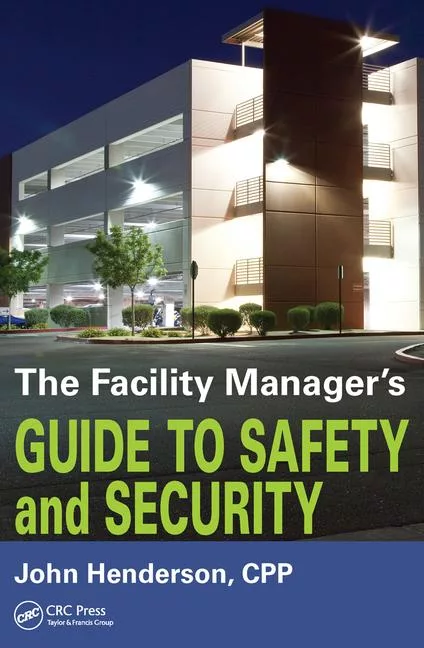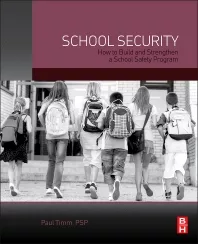7 Tips to Improve Security Officers’ Incident Report Writing Skills

I was on the fourth grade football team, playing tight end, the first time someone called me the “Gardener.” For some reason, whenever the quarterback threw a pass to me, I ended up diving into the dirt to catch the ball. Trust me, I spent a lot of time in the dirt. Maybe the quarterback who, like me, was only 9 years old, couldn’t throw the ball far enough. Or, I was too slow. Most likely the latter was true, which is why my football career never lasted past the sixth grade.
Today I’m still called the Gardener. However, I’m now called the Gardener because I like to dig deep into an incident report and pluck out the weeds, or rather unnecessary words and phrases. It’s almost an obsession with me, but it’s all done with the goal of writing reports that are always readable and understandable. There are always words, phrases – sometimes even whole sentences and paragraphs – that can be pruned from anything you write. The trick, of course, is to know when to remove a word or phrase – and when not to.
Here are seven tips for your security team to improve their incident report writing.
- Redundancy: As I read dozens of incident reports each month, I’m still mystified by the number of reports that are both clumsy and redundant. For example, an officer writes “registered nurse” after each and every nurse mentioned within a report. When, say, responding to a Code Gray call, there might be four or more nurses involved in the incident. And, because of this, “registered nurse” might appear 20 or 30 times within one of his reports. I’ve yet to convince the officer that, upon second mention, he can refer to the nurse as, say, RN Smith. Truly, because of the redundancy in his writing, there is no movement or flow to his reports – making it almost impossible to understand what he’s written. It’s like being stuck in quicksand. By avoiding such unnecessary clutter, and confusion, incident reports will drive forward with a narrative that is precise, informative and uncomplicated.
- Your Reports are Read by Others: I never forget that my reports are often read by non-security department personnel. Perhaps, as an example, a visitor had a trip and fall incident while visiting a patient. Without a doubt, at the very least, the report will be read by our Risk Management team. There is also a good chance my report will be read by our Legal team. And beyond that, my report could be read and used in a court of law. Knowing this, I visualize the incident and write a narrative that is so crystal clear it can be understood by anyone at any point throughout the organization. Truly, what I write, and how I write it, could have either a positive or negative financial impact on the enterprise that has employed me. Taking it even further, in this litigious world we live in, should my report be clumsy and confusing, I could end up in court trying to explain what I meant by what I wrote - or thought I wrote.
- Make Each Word Count: My favorite book on writing, and one that’s been around a long time, is “The Elements of Style” (fourth edition) by William Strunk Jr. and E.B.White. I turn to this book all the time for inspiration. Strunk, who originally penned this little gem back around 1919, actually wrote that “each word must tell.” And, my favorite, “omit needless words.” Really, it’s just that simple. However, to be clear, although Strunk preaches that every word must count, he wasn’t encouraging writers to carelessly eliminate important facts and information. The best way to achieve such clarity and simplicity, as taught by Strunk 100 years ago, is to be accountable for every word, sentence and paragraph you write. Isn’t that why they invented the backspace key?
- You’re Not An English Teacher: That is, don’t try and replace that 7th grade English teacher from Junior High School. If you approach an officer about, say, the subject-verb agreement, or the proper use of a preposition, you’ll most likely draw a blank stare. Instead, let officers read good reports – pointing out those factors that work and why they work. Keep it positive. Really, it’s just that easy: allow officers to review incident reports that are well-written, and you’ll often see an immediate improvement in that officers’ report writing skills and techniques. At the very least an officer will begin to write with more confidence.
- Bovine Speculation: General Norman Schwarzkopf used to tell reporters during the first Gulf War that any opinion he gave would be nothing more than “bovine speculation.” Never allow yourself to include an opinion within a report. And, on that same note, don’t make assumptions. This takes discipline because it’s easy to get caught up in a report, especially if the incident being recorded involves, say, injuries to fellow staff members. Emotions can run high because of the injuries, and now the narrative is being used to send a warning to others, including administrators. Stick to the facts, and skip the bovine speculation.
- Every Writer Must Learn To Be An Editor: Your best chance at delivering a sound, professional incident report, each and every time you are tasked to write one, is to be able to successfully edit your own writing. It’s truly imperative to know what information, including words, sentences and even entire paragraphs, to edit out of your report. Stephen King, in his book titled “On Writing: A Memoir of the Craft,” wrote that “to write is human, but to edit is divine.” On this point, I’ll offer an analogy. Many years ago I was a professional wedding photographer. There would, of course, be the day – usually a few weeks after a wedding – when the bride and groom dropped by the studio to look over their wedding photos. I quickly learned, sometimes at a financial loss, that it really didn’t matter how technically proficient I was as a photographer. What mattered was the final product – those photos being reviewed, slowly, one by one, by the bride and groom. I learned that the best wedding photographers delivered photographs that had been edited – by cropping, framing and color and exposure adjustment, etc. Sometimes it was the best decision to entirely delete a photo. The same principals hold true for report writing. The best reports are usually those that have been thoroughly reviewed and edited.
- Sequential Writing: You would think that writing in sequence, from first event to last event, would be obvious. However, I’ve learned you can never assume anything when it comes to report writing. And, as I’ve stressed in this article, writing with absolute clarity is an essential goal when completing a report. If there are a number of important events that occur during an incident, I’ll number them. Why not? Make it easy on the reader and help them understand what happened during an incident. As an example, I recently wrote a report that involved a man who continued, over a 30-minute span, to enter the main lobby and harass visitors and staff members. Each time the man was escorted off property, he would return within minutes. The police department was eventually called and, after several trespass warnings were issued, the man was arrested. Because of the arrest, I knew the incident had to be documented with absolute clarity. I numbered each event (entering a lobby and harassing visitors and staff members) within the entire incident, along with the time each event happened. There were a total of seven events. By recounting the incident with such simplicity, and accuracy, step-by-step, I was confident all readers would understand what transpired throughout the incident.
Sturdy, accurate report writing doesn’t need to be a complicated process. Yet, time-after-time, and after relentlessly preaching to the choir about writing reports that are straightforward and uncomplicated, I still read reports that get tangled up in the language, like being trapped in molasses, and ultimately fail to adequately record an incident that can be understood by each and every reader. It’s up to department managers and supervisors to guide their officers, gently, into understanding that it takes patience and practice - and the ability to edit and revise – in order to deliver a professional report.
I love the craft of writing. And although I’m no longer on the fourth grade football team, diving in the dirt to make a catch, I’m still the Gardener. I still enjoy the job, after 35 years, of delivering reports that are consistently well-written, accurate and – best of all – readable.
Looking for a reprint of this article?
From high-res PDFs to custom plaques, order your copy today!






